Alongside the Temple of Literature, the Tortoise Tower at Hoan Kiem Lake, and others, the Hanoi Flag Tower has always been considered one of the symbols of the Capital. It is a remarkable and grand structure within the complex of the Thang Long Imperial Citadel, serving as a historical symbol of the resilience and bravery of the people of Hanoi during the resistance against the French colonial invasion. With its unique architecture, ancient charm, and the image of the red flag with a yellow star flying high in the sky for the past 65 years, the Hanoi Flag Tower has become an unmissable destination for tourists on a journey to explore the rich history of this thousand-year-old land.
Table of Contents
Hanoi Flag Tower – information you might not know.
Where exactly is the Hanoi Flag Tower located?
The Hanoi Flag Tower, also known as the Ky Dai Hanoi, was built in the 19th century on the grounds of the Thang Long Imperial Citadel, which was once the site of the Tam Mon Palace during the Le Dynasty. Today, it is situated within the premises of the Vietnam Military History Museum, on Dien Bien Phu Street, across from Lenin Park, in Ba Dinh District. Despite the passage of time and various historical events, this structure has retained its original form and holds the highest historical significance within the Thang Long heritage complex, following the resistance against French colonial rule and the struggle against the American empire.
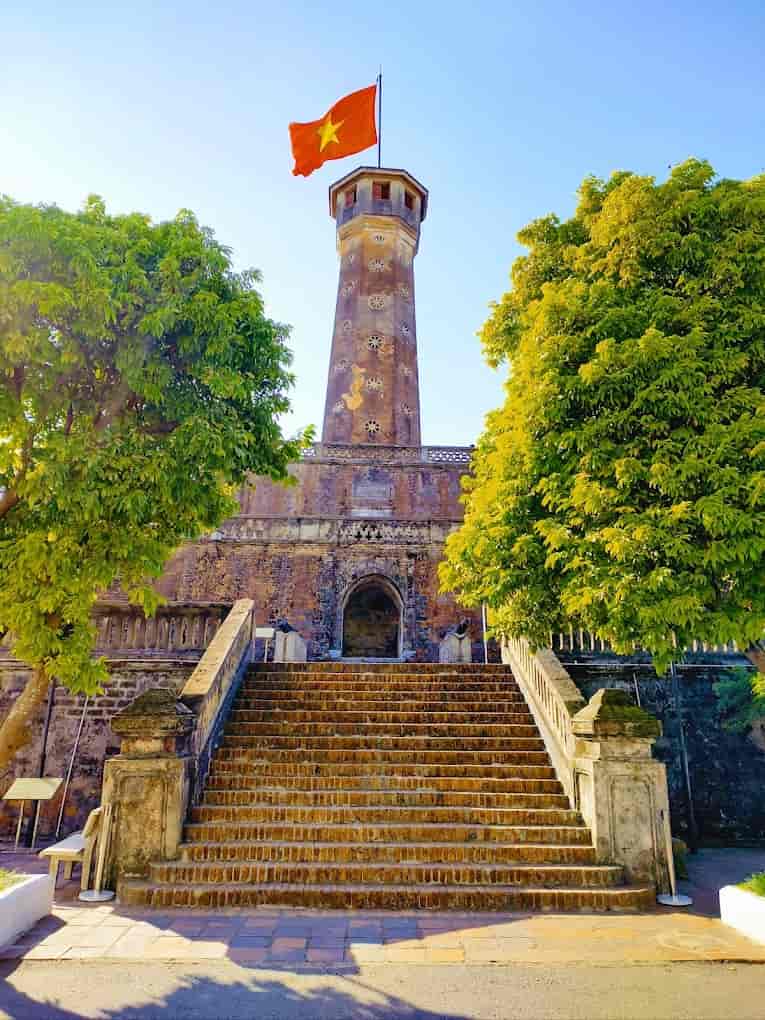
History of the Hanoi Flag Tower.
From 1805 to 1812, King Gia Long of the Nguyen Dynasty ordered the construction of the flag tower with the purpose of using it as an observation post. The windows at the top allowed for a panoramic view of the entire city and its surroundings. This is why the French colonialists did not destroy it during their temporary occupation from 1894 to 1897. Instead, they repurposed the structure for observation purposes, using lights and flags to communicate with other units.
Later, during the resistance against the American military, it was reclaimed and used for similar purposes by Hanoi’s air defense forces. In 1945, after the success of the August Revolution, it was the first time the red and yellow star flag was hoisted on top of the flag tower. By 1954, the victory in the fight against French colonialism saw the National Flag once again flying atop the Ky Dai.
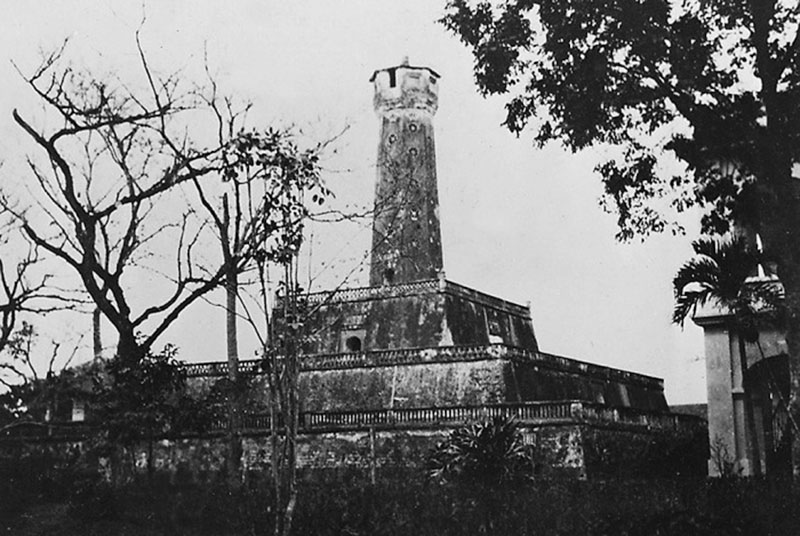
In the memories of millions of Hanoi residents, this was a day of triumph. The entire city was jubilant, with crowds converging around the Hanoi Flag Tower in anticipation of the flag-raising ceremony, a historic moment. At precisely 3:00 PM on October 10, 1954, the national anthem echoed amidst cheers, and the flag was raised. From that moment, the image of the red and yellow star flag flying on the flag tower became a symbol of Vietnam Democratic Republic’s independence. In 1989, it was officially recognized as a historical relic.
What’s special about the Hanoi Flag Tower?
Exploring the unique architecture of the Hanoi Flag Tower.
According to travel experiences in Hanoi, the Hanoi Flag Tower stands at a height of 33 meters, or 44 meters if you include the flagpole. It is constructed with a structure comprising three tiers of platforms and a tower. The base tiers have truncated square pyramid shapes, decreasing in size and stacked on top of each other. The first tier is 3.1 meters high, with each side measuring 42.5 meters, and it has staircases made of bricks leading to the second tier. The second tier is 3.7 meters high, with each side measuring 27 meters, and it has four doors with different inscriptions. The South door bears the words “Hướng Minh,” the East door bears “Nghênh Húc,” the West door bears “Hồi Quang,” while the North door is without an inscription. The third tier is 5.1 meters high, with each side measuring 12.8 meters and it has a staircase leading upwards towards the North.
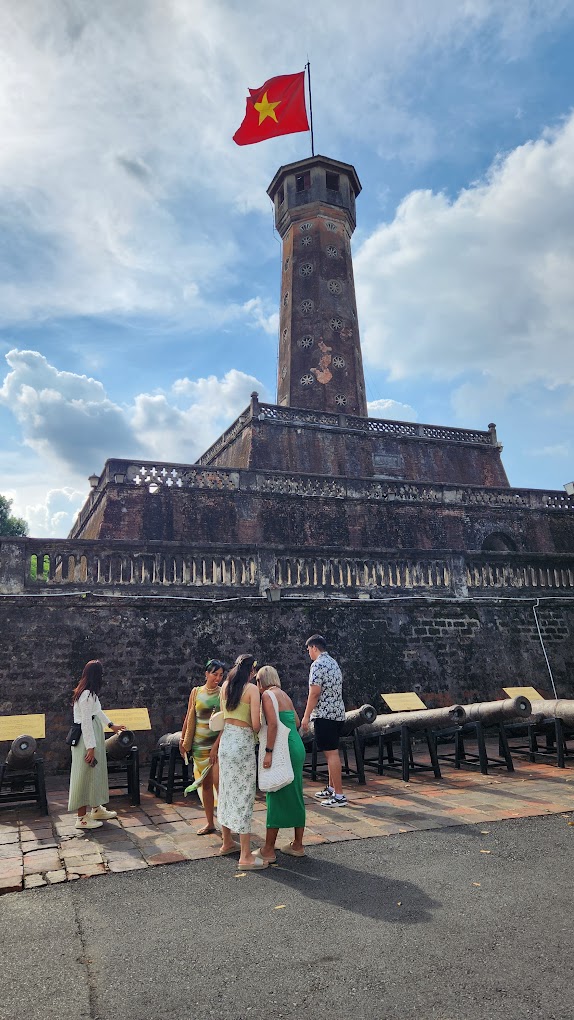
The uppermost section is the column itself, measuring 5.1 meters high and 18.2 meters long, with an octagonal shape that gradually narrows towards the top, with each bottom side being approximately 2 meters wide. Remarkably, within the column, there are 54 spiral-shaped circular stairs leading to the top, along with 39 fan-shaped holes for illumination and ventilation. The remaining part is the pinnacle of the Hanoi Flag Tower. When viewed from a distance, it resembles a hexagonal-shaped pavilion with a height of about 3.3 meters and eight sides corresponding to eight windows. In the center of the pavilion, there is a cylindrical pillar with a diameter of 40 cm, reaching to the top, which serves as the flagpole socket.
The image of the red flag atop the Hanoi Flag Tower.
It’s unclear when exactly the image of the red flag with a yellow star fluttering on top of the Hanoi Flag Tower became deeply ingrained in the minds of Hanoi residents and tourists visiting the site. Previously, the red and yellow star flag only appeared on special occasions and festivals. However, since 1986, it has consistently flown atop the flag tower.
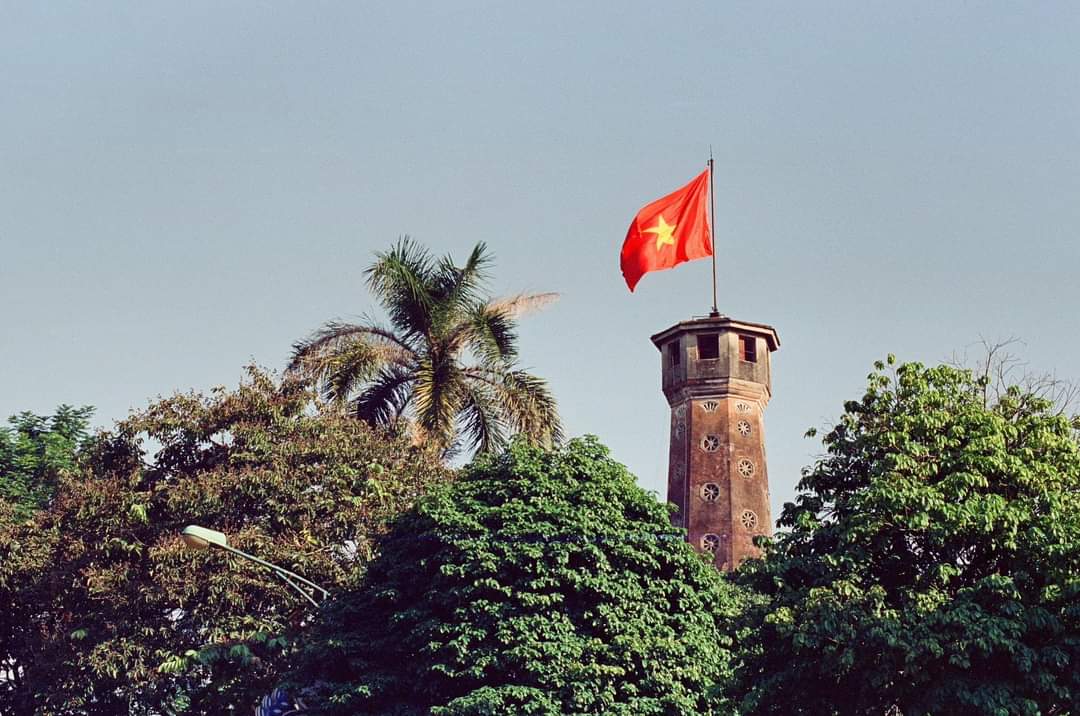
The flag hanging at the summit of the Hanoi Flag Tower measures 4 by 6 meters, covering an area of 24 square meters. It is made from glossy fabric and meticulously stitched with three rows of stitching. The flag’s corners are reinforced with star-shaped patches to withstand strong winds. Regardless of when the flag fades or tears, it is immediately replaced to preserve this sacred symbol of the nation.
Hanoi Flag Tower – a must-visit attraction.
Is there an entrance fee to visit the Hanoi Flag Tower?
Since it is located within the Thang Long Imperial Citadel in Hanoi, you need to purchase a ticket to visit the Hanoi Flag Tower. The ticket price is 20,000 VND per person for a single entry. Students, senior citizens over 60 years old, and individuals with revolutionary merits receive a 50% discount on the ticket price. Students under 15 years old and those with significant contributions to the revolution can enter for free. The visiting hours are from 8 AM to 5 PM every day of the week.
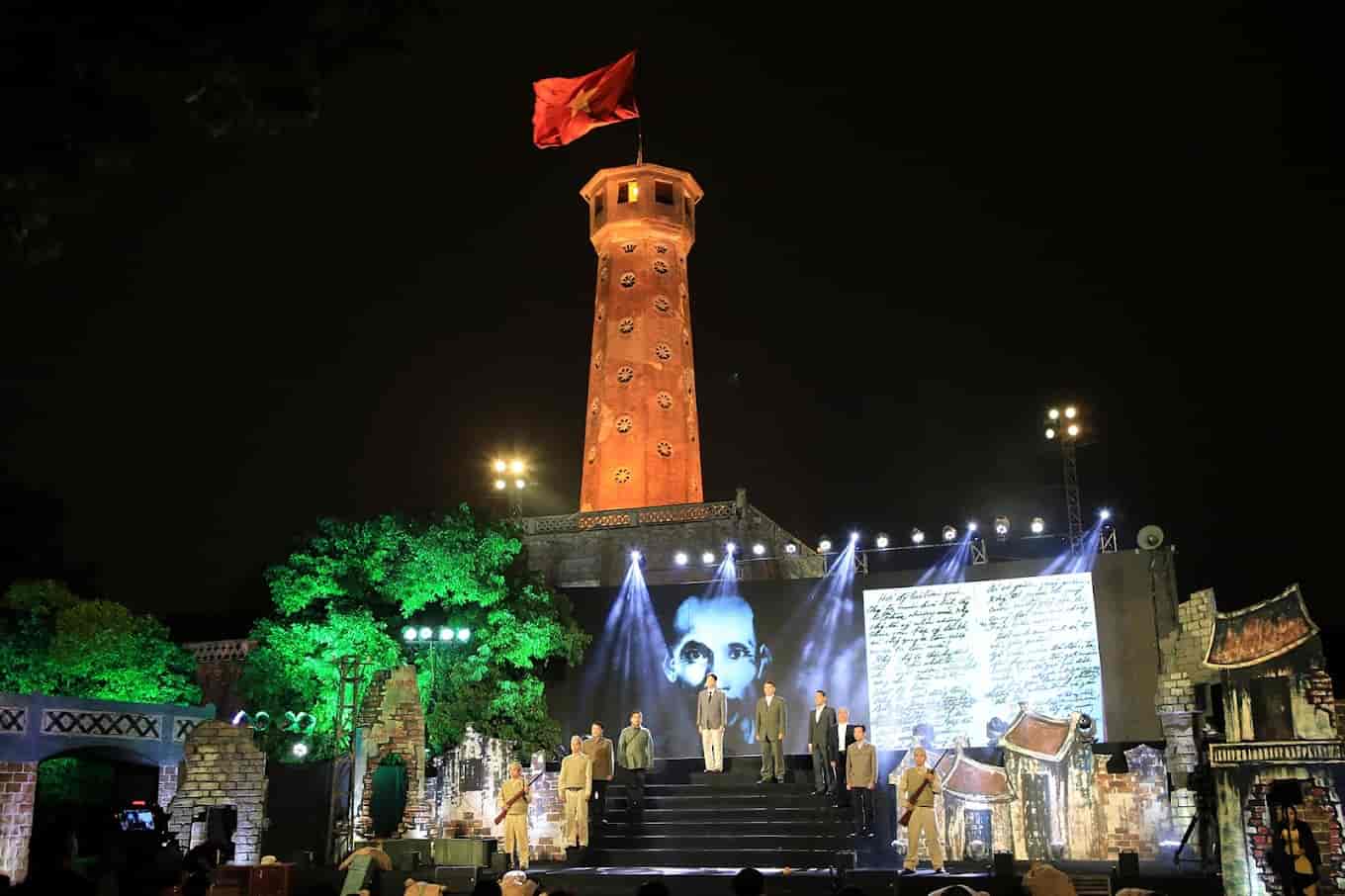
Please note: If you are eligible for a free or discounted ticket, you must present your identification card or relevant documents to prove your eligibility.
Directions on how to get to the Hanoi Flag Tower.
The Hanoi Flag Tower is located in the heart of the capital city, so travelers visiting Hanoi don’t need to go far to reach it. You can choose to walk, rent a motorbike in Hanoi, or take a bus. If you opt for the bus, take bus route number 22. If you’re traveling by motorbike, follow Trang Thi Street towards Cua Nam Gate, then continue on Dien Bien Phu Street until you reach the intersection of Dien Bien Phu and Nguyen Tri Phuong. Alternatively, you can simply ask for directions to Ho Chi Minh Mausoleum, and you’ll find it nearby.
Furthermore, if you’re looking for a convenient way to visit the Hanoi Flag Tower and many other places in a day, you can consider renting a private car with a driver in Hanoi from VnCarRentals.com’s. With our private car rental service, our professional drivers will pick you up anywhere in Hanoi, ensuring you have a safe and cost-effective journey.
Tourist attractions near the Hanoi Flag Tower
Hanoi Thang Long Imperial Citadel: Located at 19C Hoang Dieu Street, Quan Thanh, Ba Dinh, approximately 600 meters from the Hanoi Flag Tower. Thang Long Imperial Citadel is a massive architectural complex built by various dynasties of kings over many periods. Here, visitors can immerse themselves in a space steeped in history.
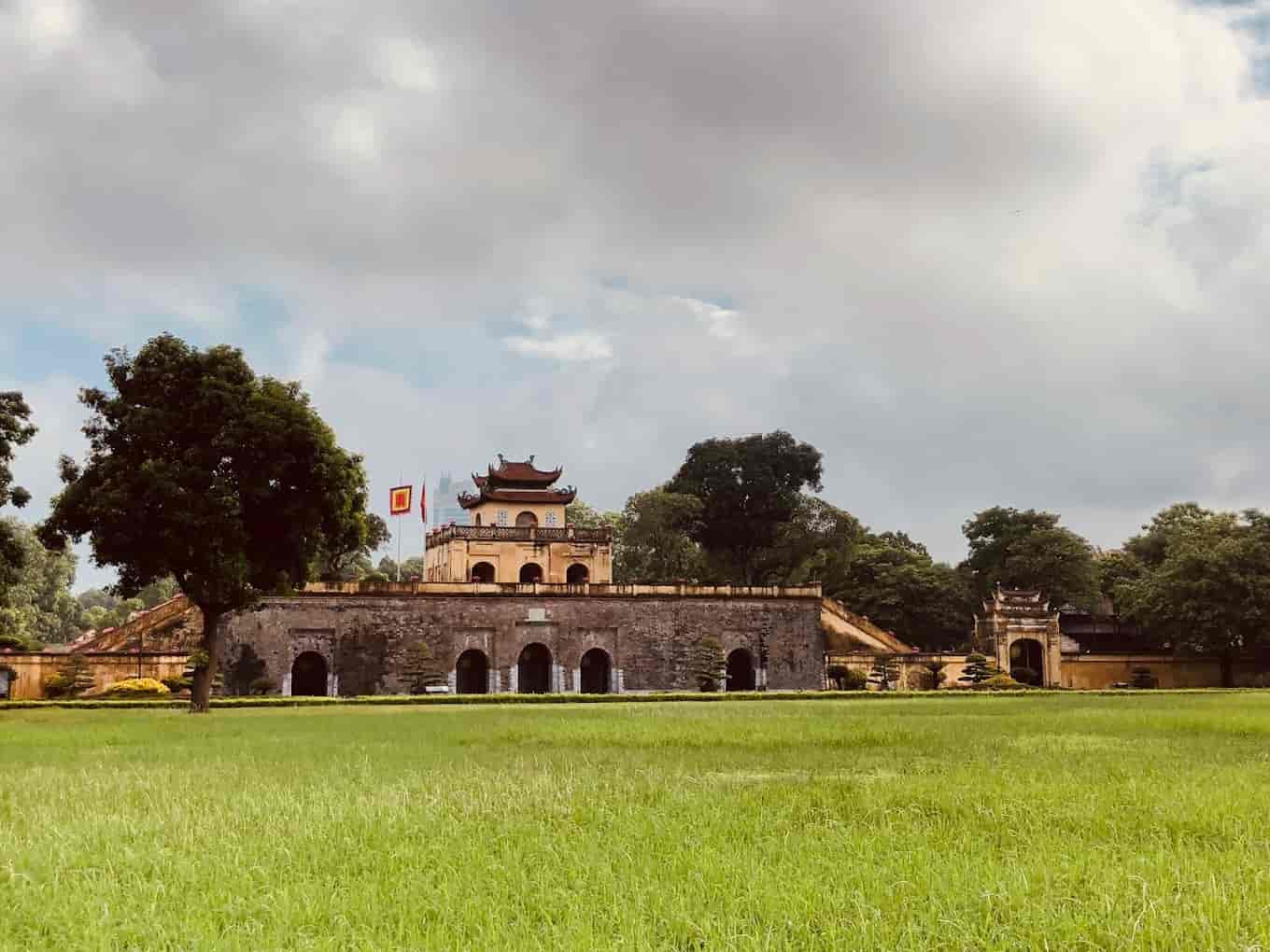
Vietnam Military History Museum: Situated at 28A Dien Bien Phu Street, Dien Ban, Ba Dinh, just 4 meters from the Hanoi Flag Tower, this is another destination worth visiting. It is the first museum in the military museum system, where about 150,000 historical, cultural, and military artifacts from the resistance against foreign invaders, from the time of the Hung Kings to President Ho Chi Minh’s era, are preserved and displayed.
Lenin Park: Just about 260 meters from the Hanoi Flag Tower, you can reach Lenin Park. This place is not only attractive due to its prime location and beautiful green spaces but also carries the glorious historical imprint of the nation.
Ho Chi Minh Mausoleum and One Pillar Pagoda: Both of these sites are about 900 meters away from the Hanoi Flag Tower. Besides paying respects to Uncle Ho at his mausoleum, you can explore the famous One Pillar Pagoda and many other points of interest in the vicinity, such as the stilt houses of Uncle Ho, the fish pond, and the Ho Chi Minh Historical Museum.
In addition to these, the Hanoi Flag Tower is also a destination that many residents of the capital city, as well as domestic and international tourists, visit when exploring Hanoi. Aside from taking souvenir photos, what initially captivates most visitors about this place is its unique and ancient architecture.
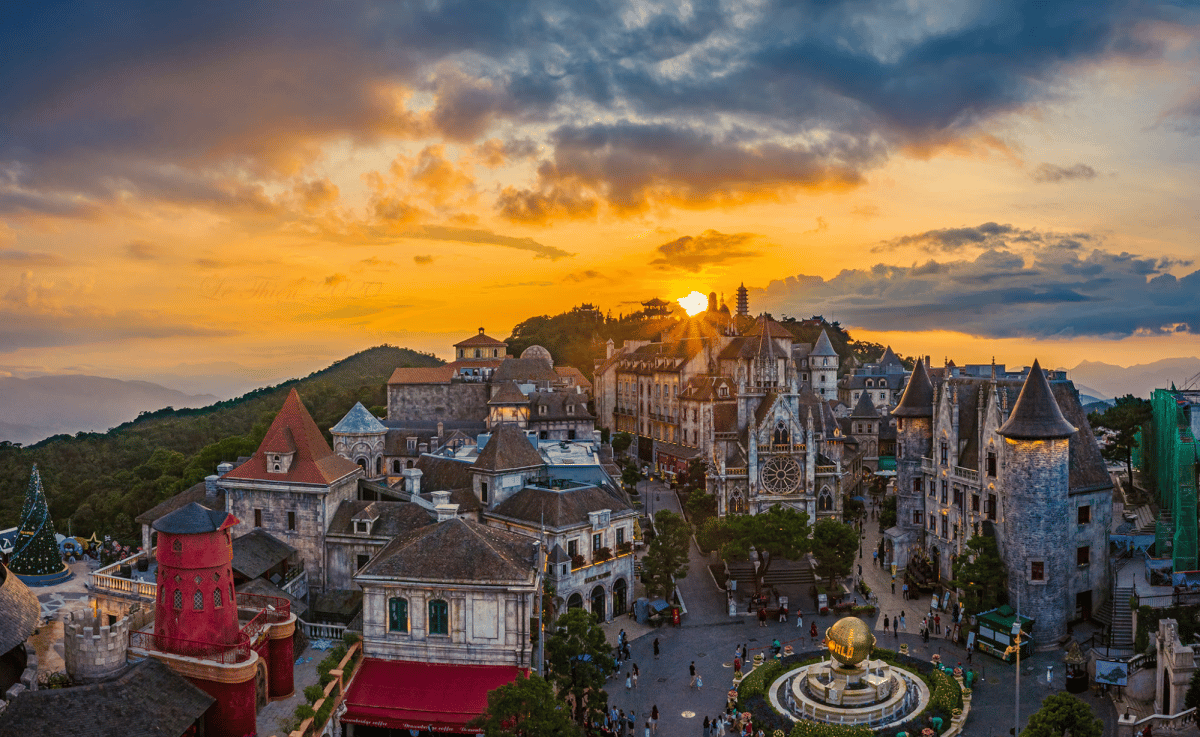

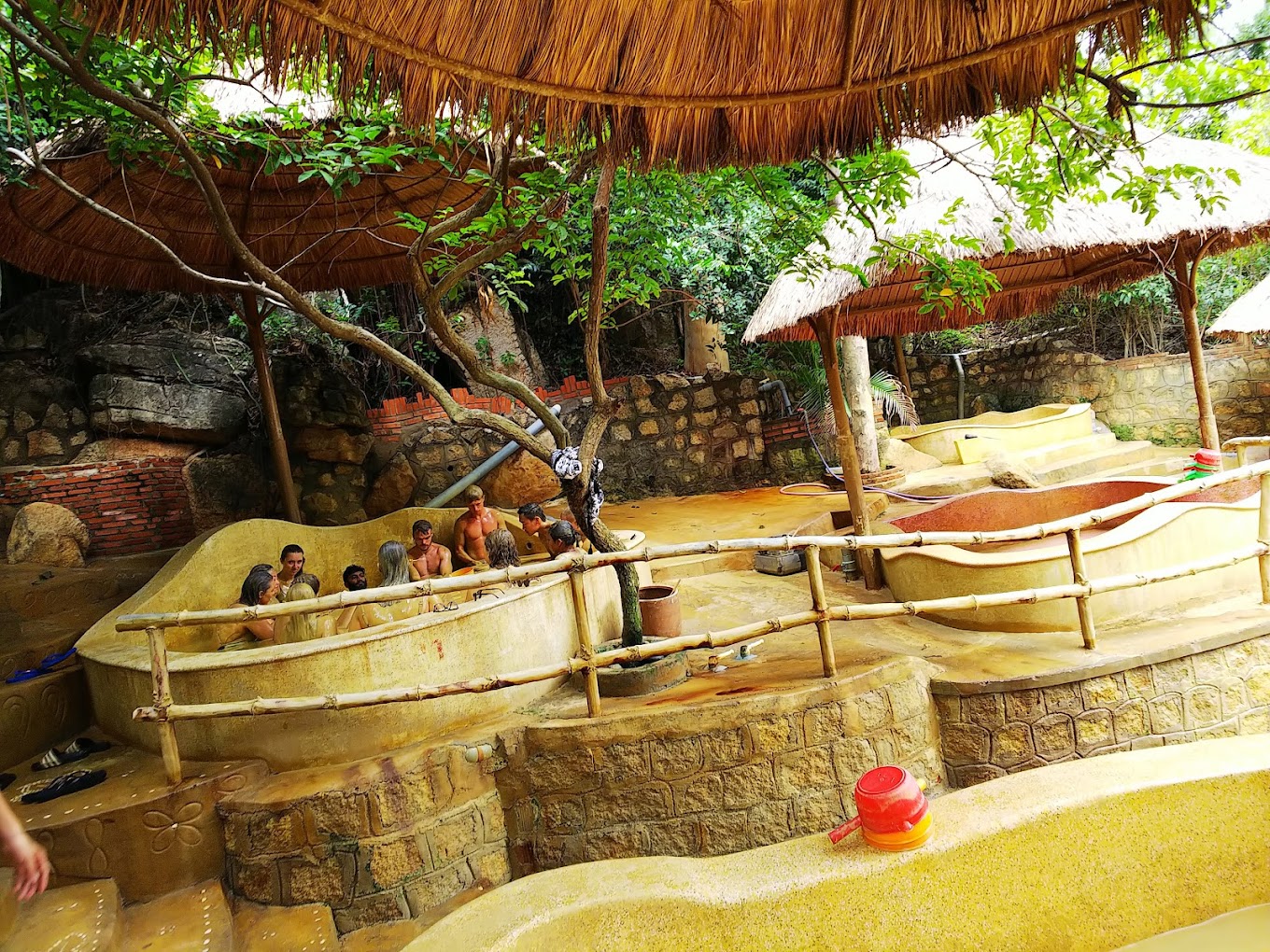
[…] The Hanoi Flagpole, built in 1812 during the reign of King Gia Long (Nguyen dynasty), is the tallest and most solid structure in Hanoi during the 19th century. Even today, it retains its original brick structure, albeit weathered and covered in moss, with visible ornate designs. […]